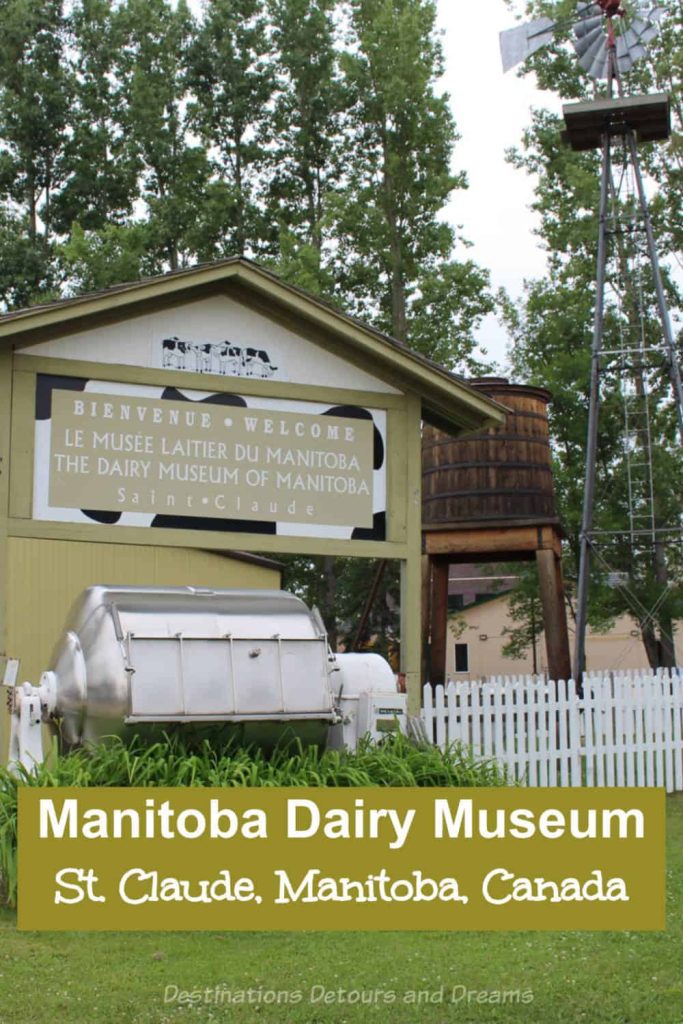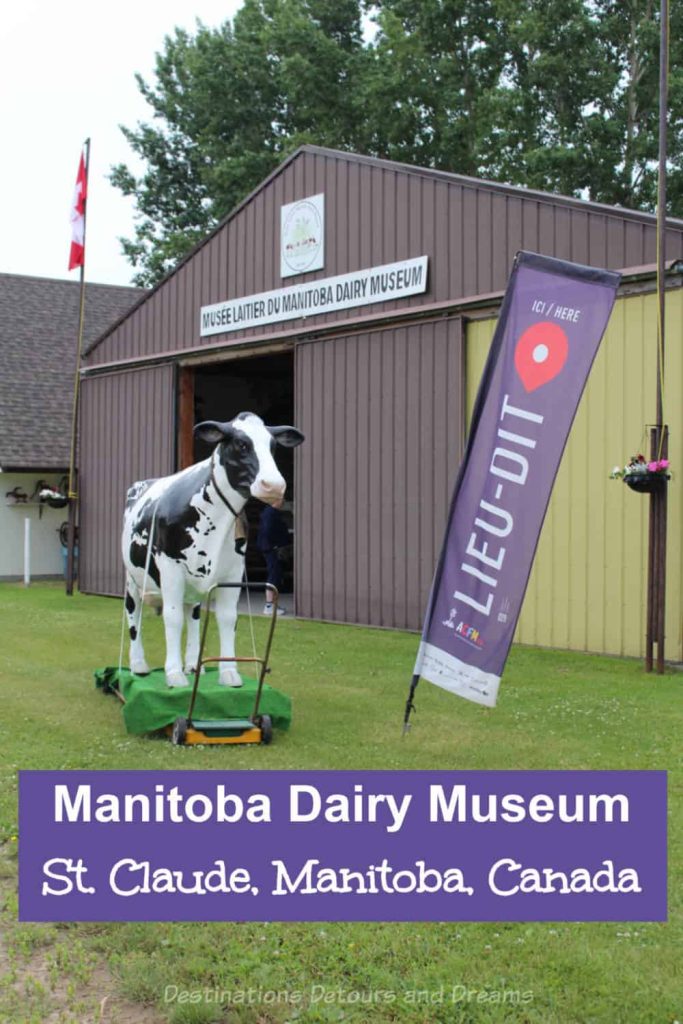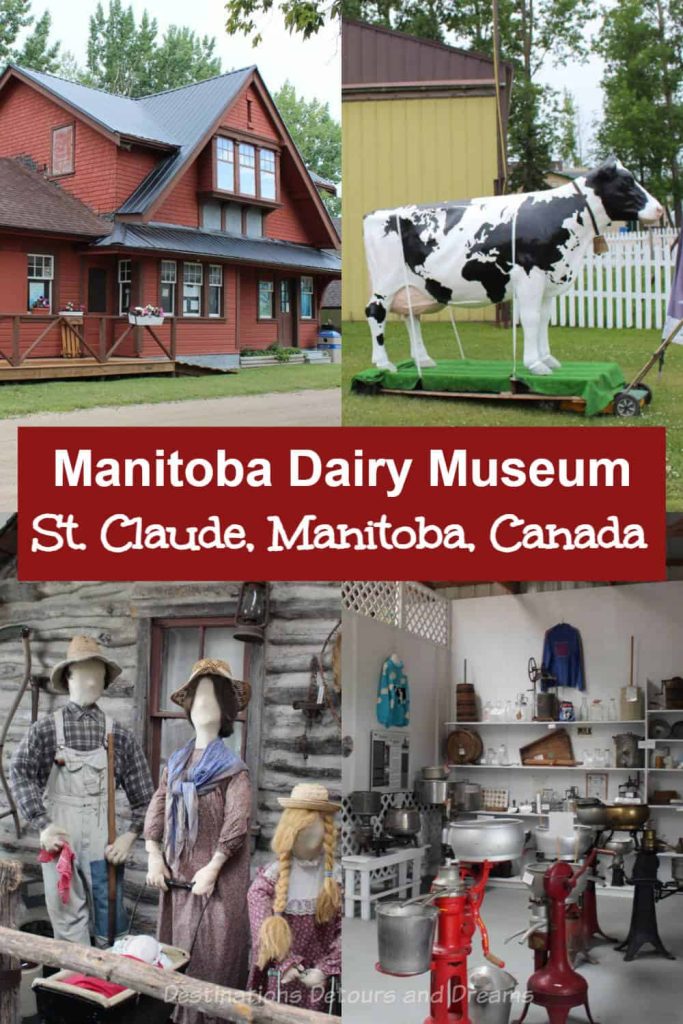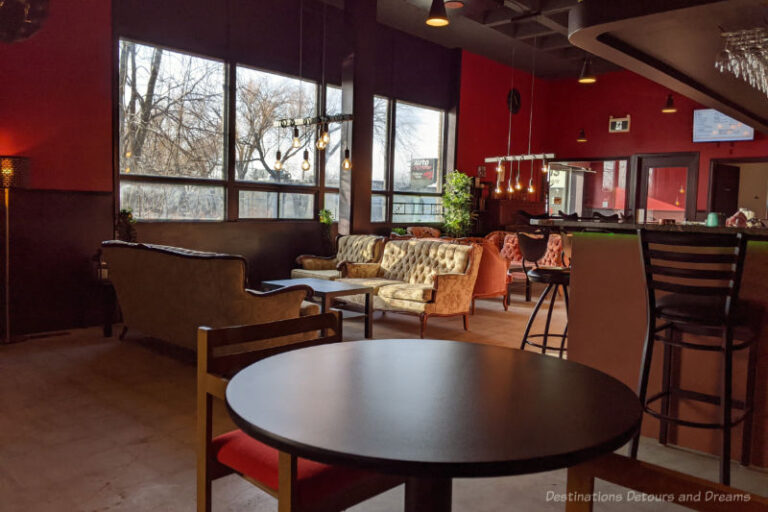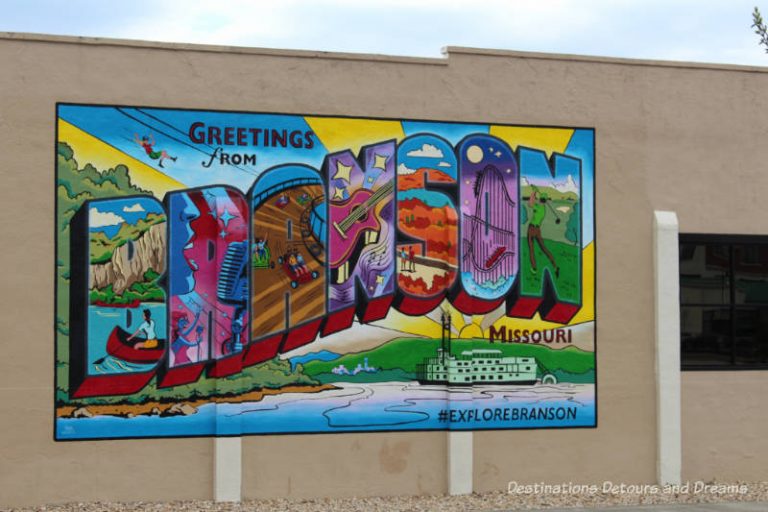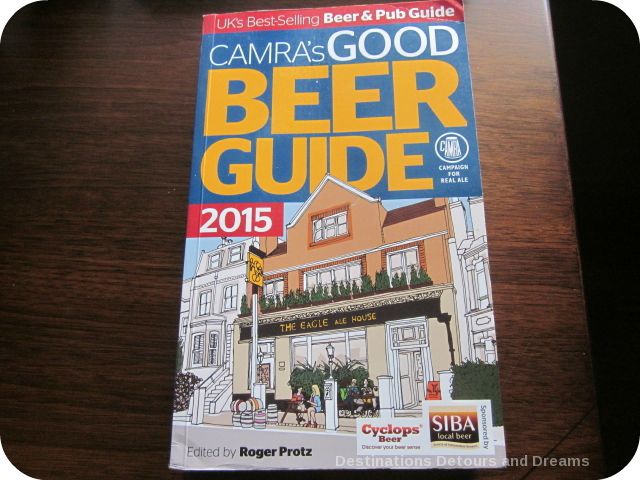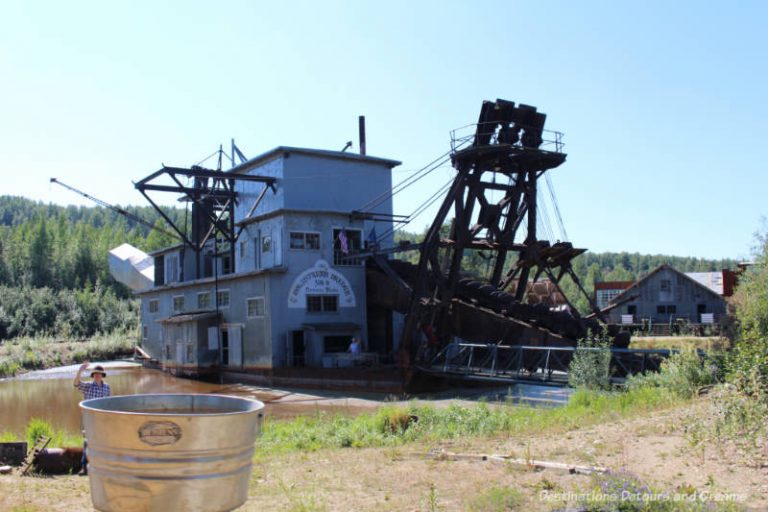Manitoba Dairy Museum
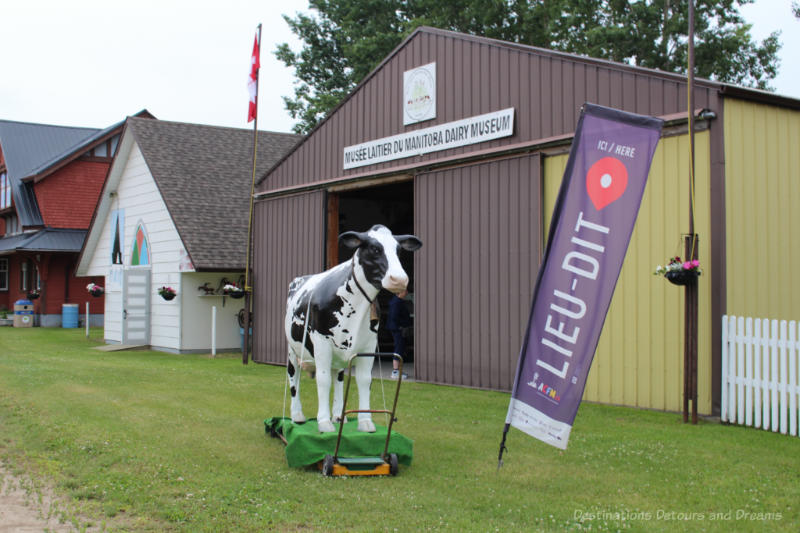
The Manitoba Dairy Museum in St. Claude, Manitoba, Canada highlights the evolution of the dairy industry as well as pioneer life and the area’s history
The Manitoba Dairy Museum (Musée Latier Manitoba) is located in the town of St. Claude, approximately 100 kilometres (62 miles) southwest of Winnipeg. The museum’s displays highlight dairy production and the evolution of the industry in Manitoba, but there is more to the museum than dairy history. Several buildings showcase pioneer life, religious artifacts, and St. Claude history.
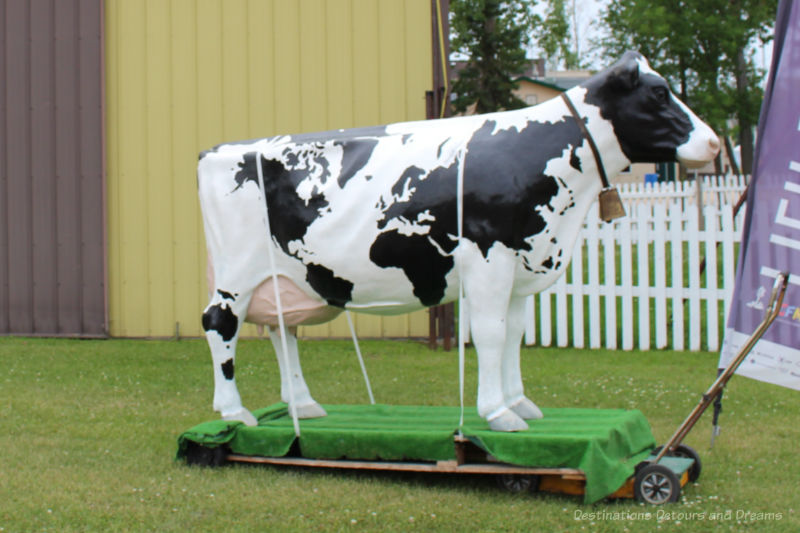
The museum calls the cow statue in front of the dairy museum building its international cow. If you look closely, you’ll notice that the black markings on it are not random spots, but instead form a map of the world.
Dairy Museum Building
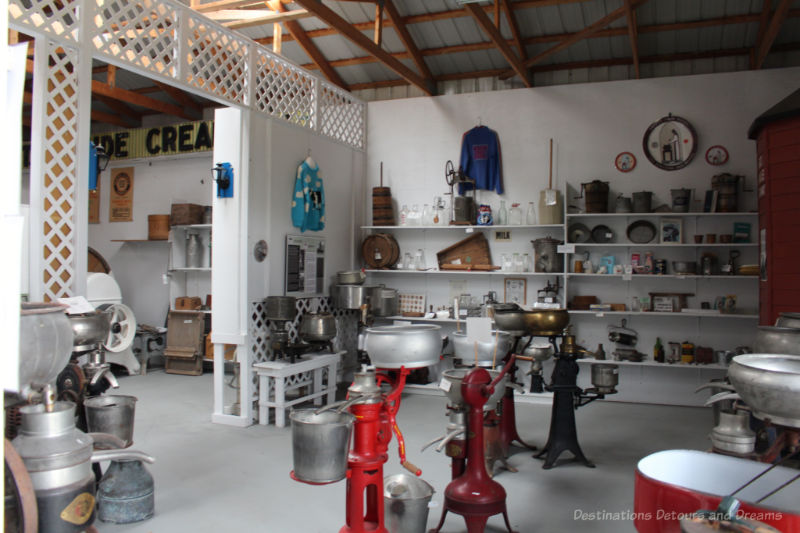
Displays in the dairy museum building are well laid out, complete with easy-to-read poster boards of information that tell an interesting story of the evolution of the dairy industry.
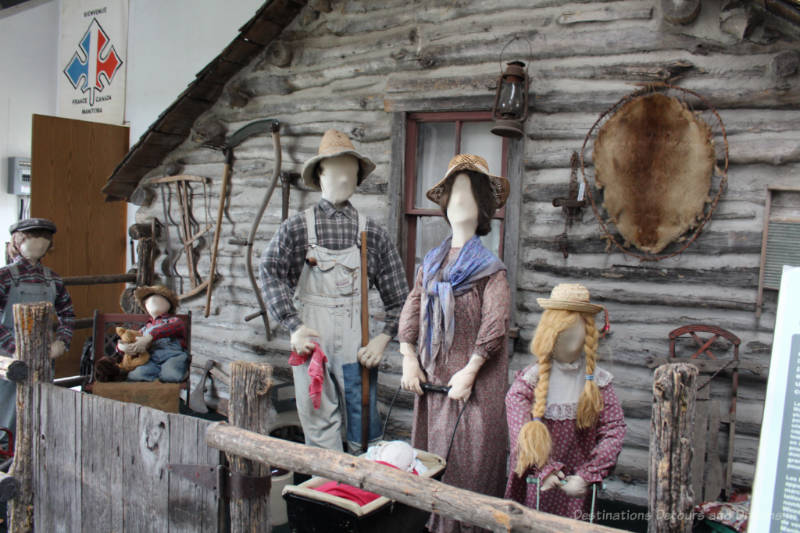
Many pioneers did not come to Manitoba to be dairy farmers, although many, like the French, Belgian, and Mennonite settlers, did have dairying experience. Most were subsistence farmers growing what they needed and trading their surplus production for supplies. Cream was often in surplus and could be churned into butter to trade at the local shopkeeper. Mennonites in eastern Manitoba were the first to take surplus dairy products directly to Winnipeg markets. In 1880, the first purely dairy herd was established in Stonewall, about 40 kilometres (25 miles) northwest of Winnipeg.
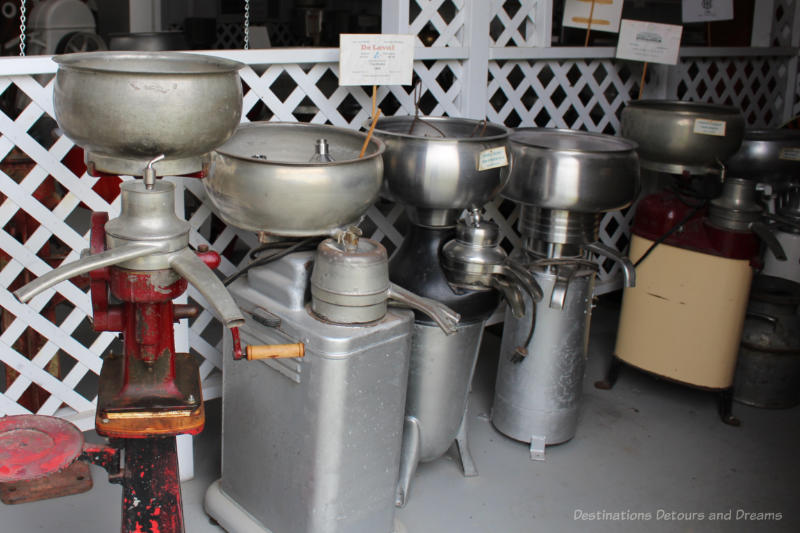
The introduction of cream separators in the late 1880s allowed farmers living beyond the urban area to market their dairy surpluses. In 1886, the Manitoba government began promoting the establishment of local creameries. By 1914, there were 36 creameries in Manitoba. During the 1930s, most creameries had established truck routes for picking up farmers’ cream. During World War II, the number of creameries jumped to 90.
From the 1920s to the 1950s, payments for cream were an important part of a farm family’s income. Because farm women traditionally did the milk separating, the cream cheque was often considered their property. During the 1930’s depression years, these cheques were often the only cash income a farm family had.
Between 1970 and 1989 , many dairy farmers decided to go into bulk milk sales and small creameries disappeared. Of the 130 that once existed, only 3 large firms remained in 1990. One was the St. Claude Creamery, which first opened in 1920. It burned in 1949 and its owners decided to build a dry milk plant instead. In 1970, it became the property of Beatrice Foods and the international company Parmalat in 1998. It still operates in St. Claude, producing butter and powdered milk products.
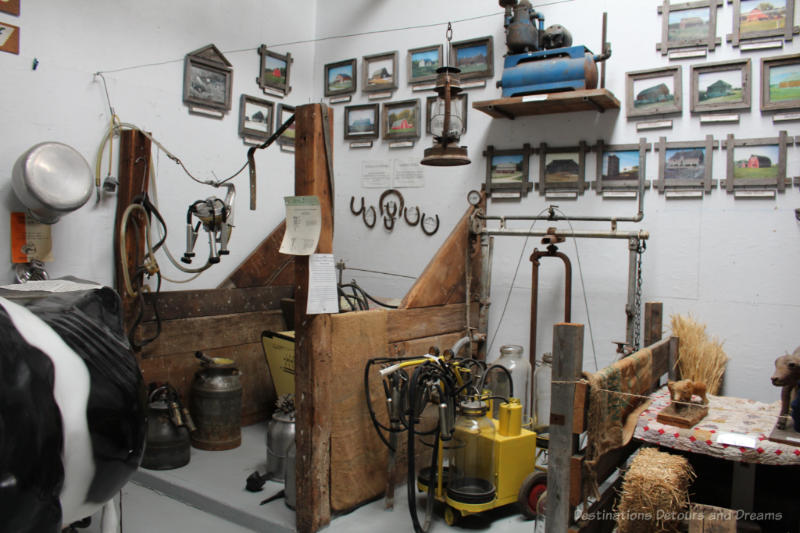
A series of displays show the evolution of milking machines. Mechanization began in the 1920s with the introduction of milking machines. After World War II, electrification enabled further advances in milking machines.
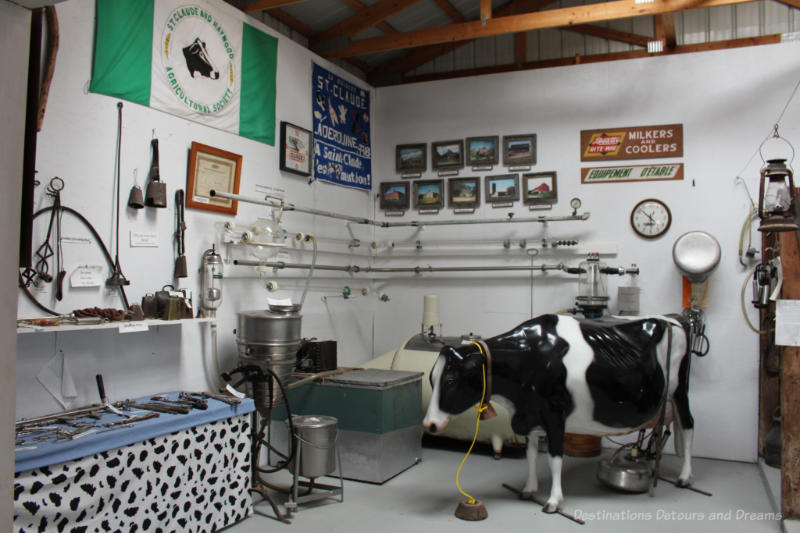
Rural electrification in the 1950s also made it possible to refrigerate milk on the farm. Before refrigeration, dairies had to be close to their customers, a distance that could be travelled each morning by horse and wagon. Milk was sold door-to-door in bulk.
(To learn more about the fascinating story of the electrification of rural Manitoba, visit the Manitoba Electrical Museum in Winnipeg.)
One display highlights the different breeds of dairy cattle and the different qualities of their milk. There are also displays on the evolution of barn structures and photos of a variety of barns.
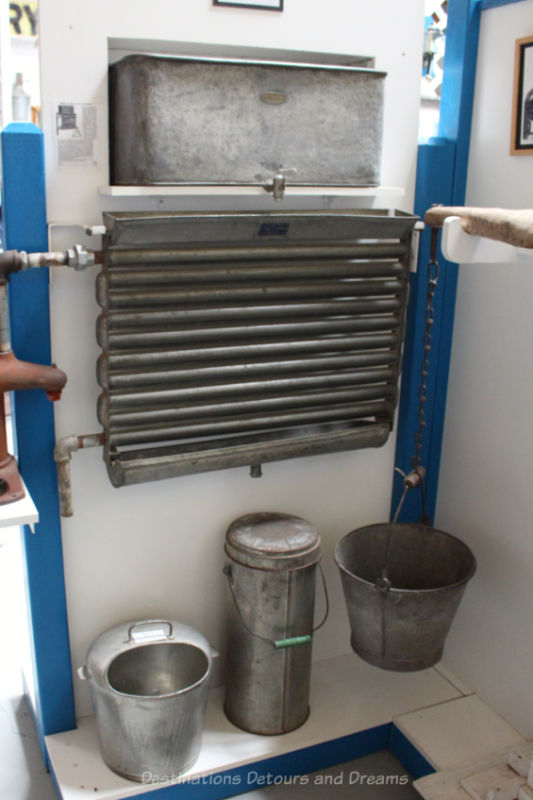
One of the display areas focused on information about the Trappist monastery that donated items from their cheese-making to the museum. The Trappist order was established in France in the seventeenth century, spread to Oka, Quebec, and then to St. Norbert, just outside of Winnipeg in Manitoba, where they established a community named Notre Dame des Prairie. They produced a distinctive cheese called Trappist Cheese (similar to Oka cheese). In 1978, they relocated to Holland, about 40 kilometres (25 miles) west of St. Claude. They continued dairy operations until the 1990s. The monastery no longer exists. The last remaining monk moved to a monastery in Quebec.
Note: The original St. Norbert site of the monastery is now a provincial park. Trappist Monastery Provincial Heritage Park, a tranquil spot along the river, contains the remains of their Romanesque-Revival church and information about monastery life. It is one of the places featured in my book 111 Places in Winnipeg That You Must Not Miss.
Horse Barn and Machinery
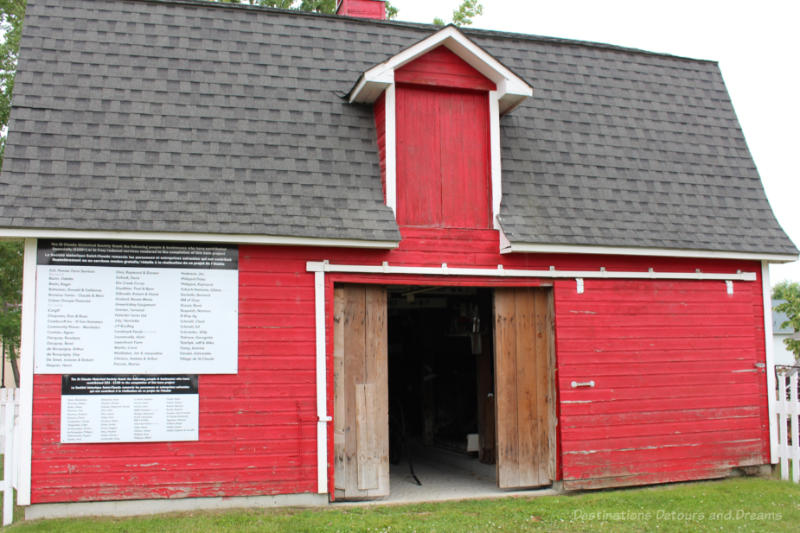
A former horse barn contains a collection of machinery and items that need to be protected from the elements. Other items of machinery are on display in the field behind the buildings.
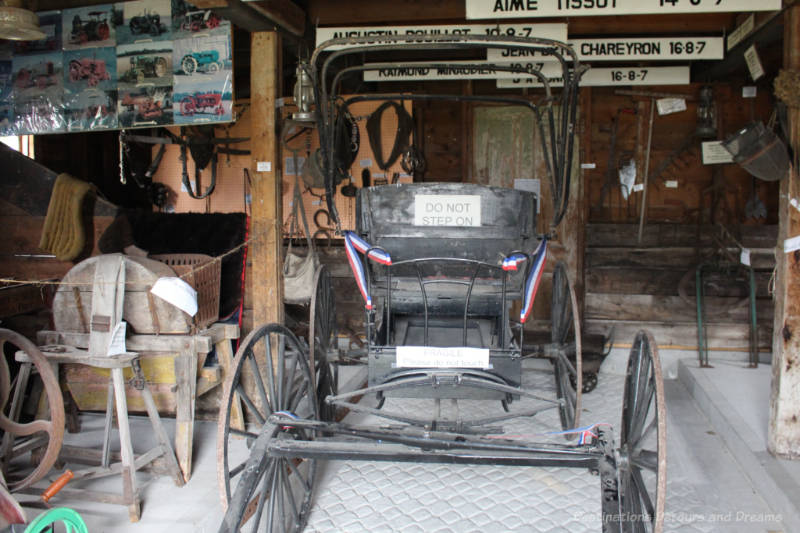
Chapel
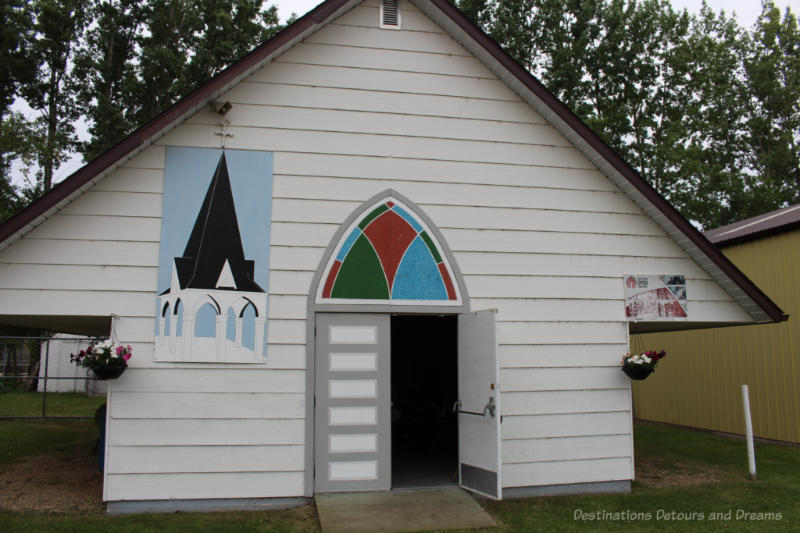
A chapel contains religious artifacts from two previous St. Claude churches as well as items from the Trappist monastery.
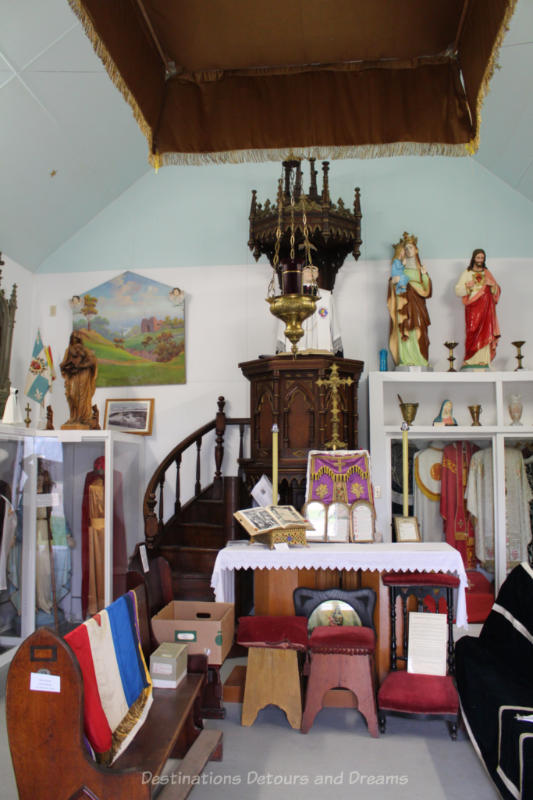
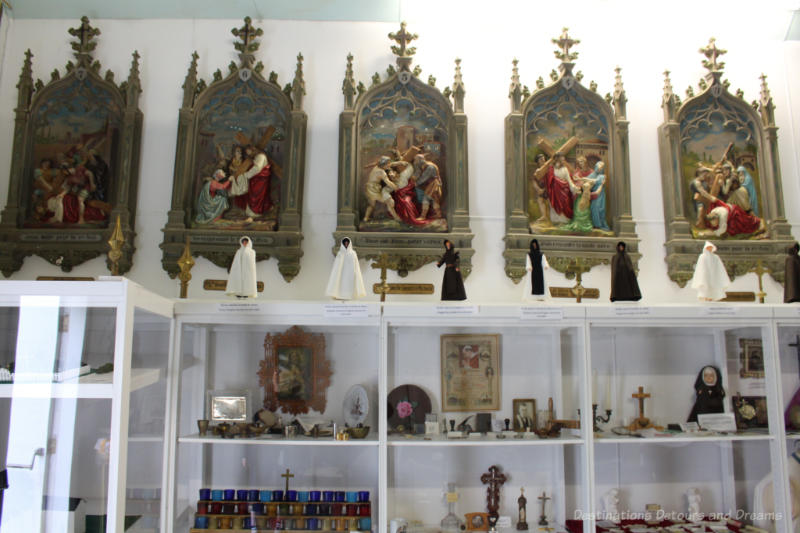
Train Station Building
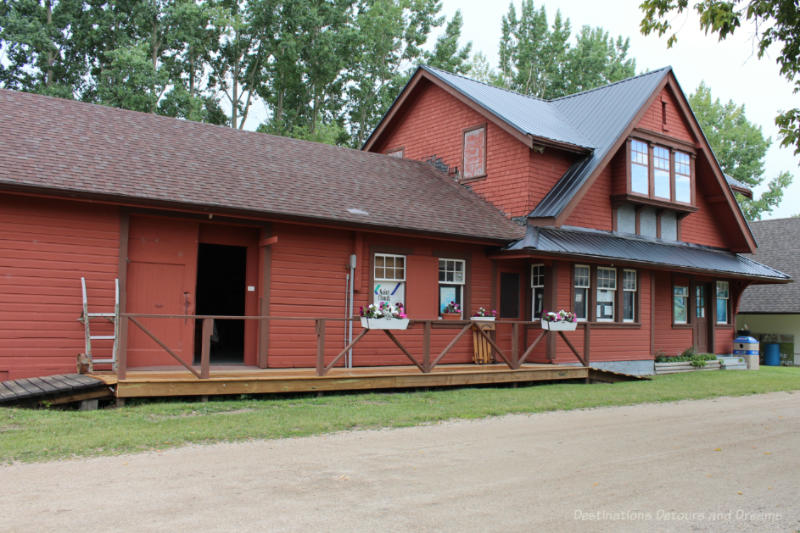
The town’s old Canadian Pacific train station house displays about pioneer life and St. Claude history.


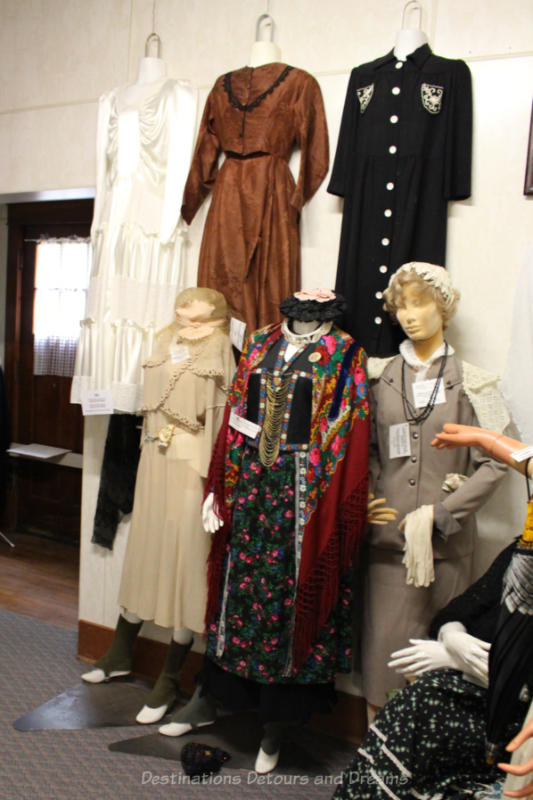
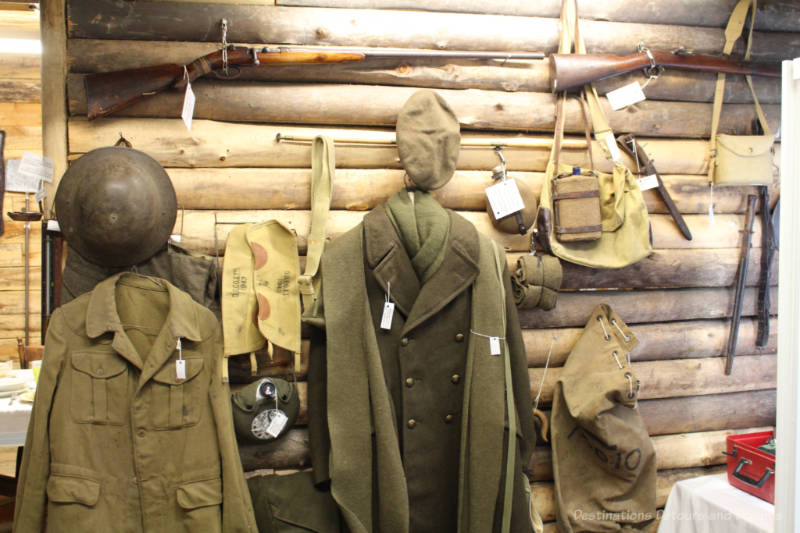
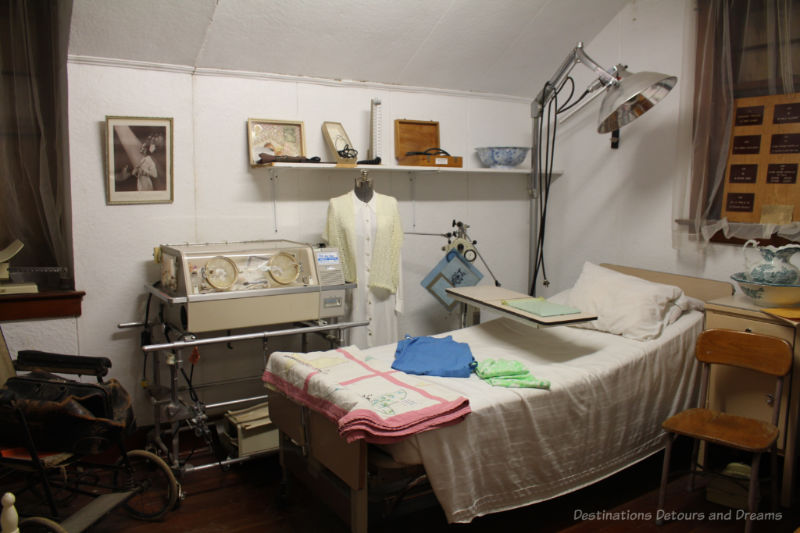
One room on the upper level is set up to look like an old hospital room. It also contains a collection of old medical devices and equipment. A sheet on the wall lists duties of hospital floor nurses in 1897. In addition to caring for their 50 patients, duties included things such as dusting the patient’s furniture and windowsills, filling kerosene lamps, cleaning chimneys, trimming wicks, and carefully making pens to keep good notes for the doctors. They were to report for duty each day at 7 am and leave at 8 pm. On the Sabbath, they had time off from noon to 2 pm. Graduate nurses in good standing were given one evening off a week for courting purposes, two if they went regularly to church, although I don’t know how they could have managed to get to church when they were constantly working.
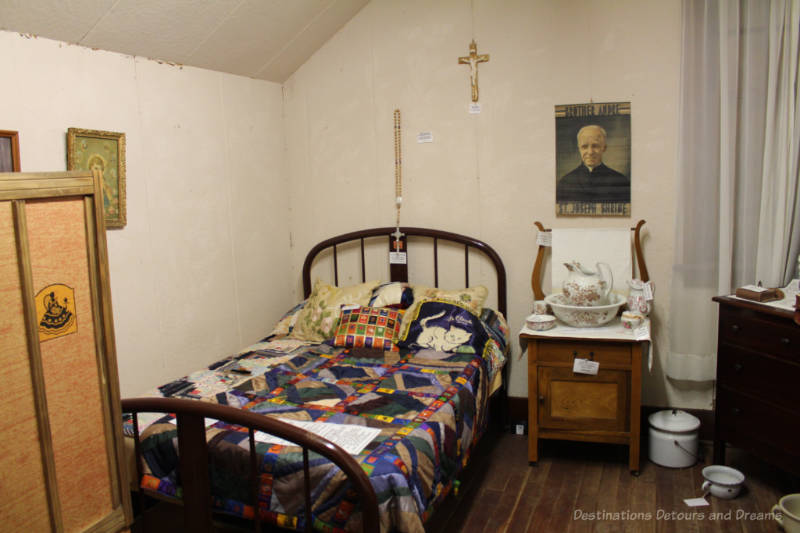
Bell Country School
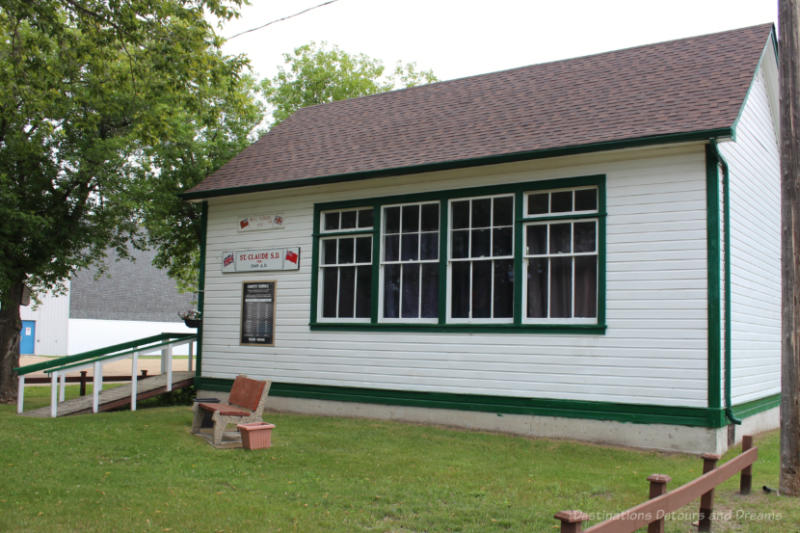
The one-room schoolhouse is set up with desks and books.
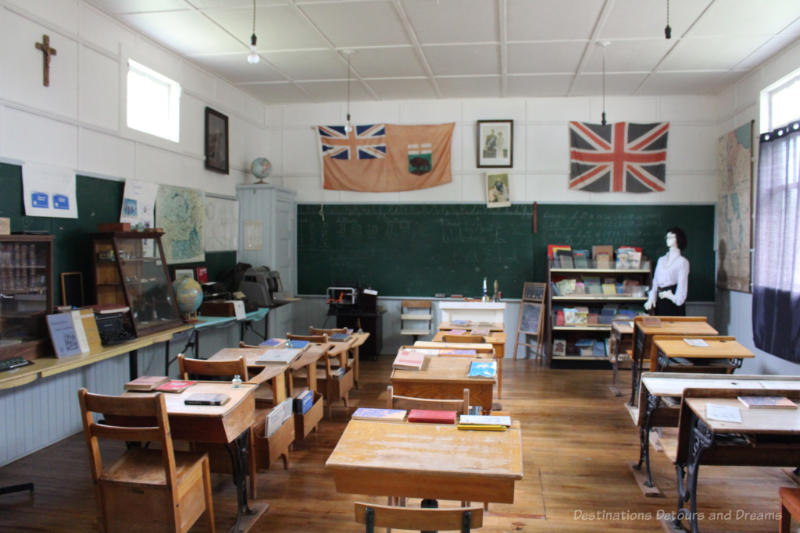
Visiting The Manitoba Dairy Museum
The Manitoba Dairy Museum is open weekdays during the months of July and August. Although one tourism site stated the museum was closed on Mondays, it was a Monday when I visited and I was able to see the museum. You may want to call ahead to double check if you plan to visit on a Monday.
You can tour the buildings on your own or get a guided tour. My friend and I toured most of the museum on our own, but a guide showed us through the dairy museum building. He provided a lot of interesting background information, both about dairy history and about St. Claude.
I enjoyed visiting this museum. There is a lot of varied things to see and they are well organized. I personally found the part of the museum focusing on dairy history the most interesting. This was partly because I’d not seen anything like that before and partly because of the extensive collection and information.
A Bit More About St. Claude
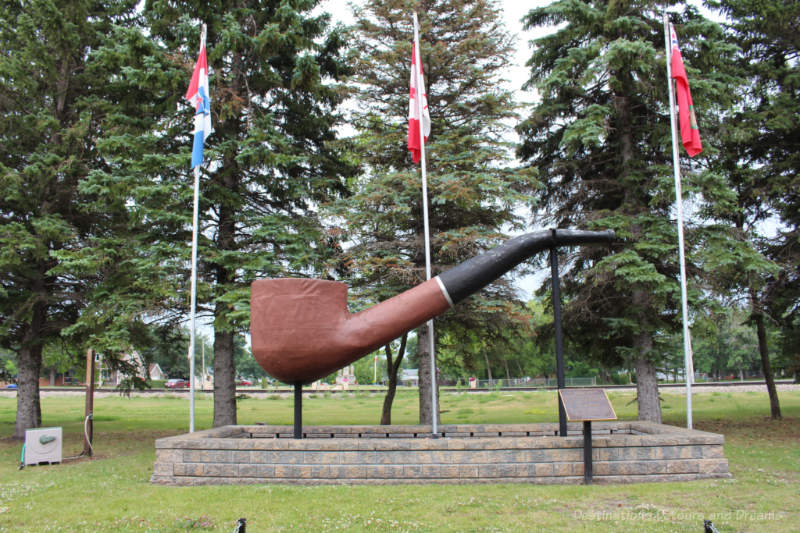
In the centre of town, alongside the railway tracks that bisect the town, you’ll find a giant tobacco pipe. The pipe is 19-feet long, 5-feet tall, and weighs just over 400 pounds. It remembers the town of St. Claude, Jura, France, from which many of the town’s settlers came in 1892. The manufacturing of smoking pipes was the main industry of St. Claude, France.
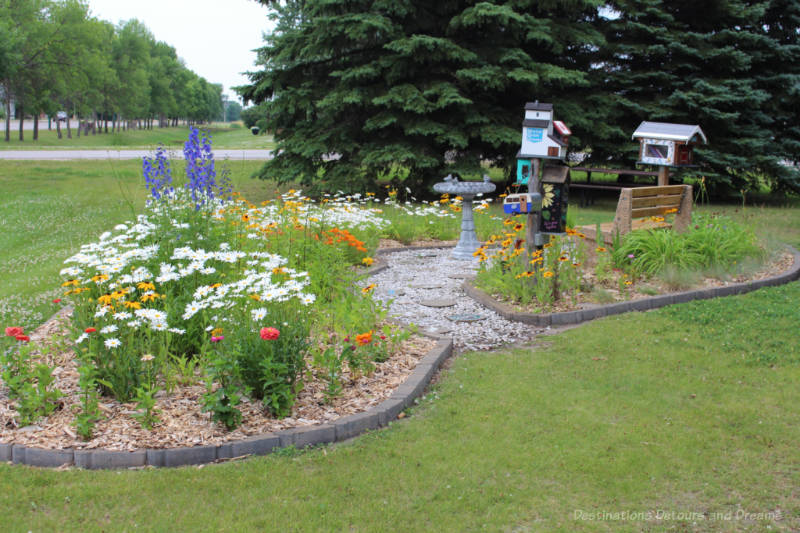
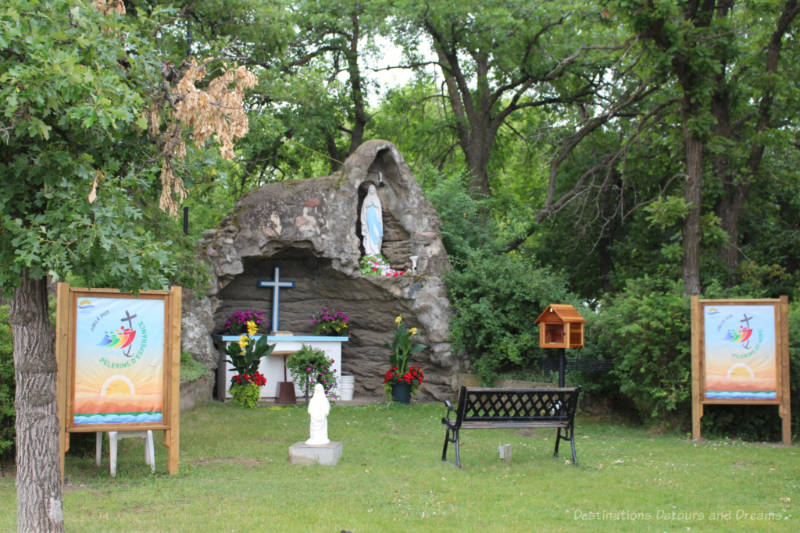
Never miss a story. Sign up for Destinations Detours and Dreams free monthly e-newsletter and receive behind-the-scenes information and sneak peeks ahead.
PIN IT
